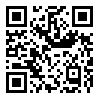دوره 29، شماره 4 - ( زمستان 1403 )
دوره29 شماره 4 صفحات 94-63 |
برگشت به فهرست نسخه ها
Download citation:
BibTeX | RIS | EndNote | Medlars | ProCite | Reference Manager | RefWorks
Send citation to:



BibTeX | RIS | EndNote | Medlars | ProCite | Reference Manager | RefWorks
Send citation to:
Mahmoudi Meymand M, Ebrahimnejad A, Barakchian S M. (2025). The Effect of Sanctions on the Tehran Stock Exchange Using Sanctions Index Based on Automated Content Analysis. JEPR. 29(4), 63-94.
URL: http://eprj.ir/article-1-2145-fa.html
URL: http://eprj.ir/article-1-2145-fa.html
محمودی میمند محمد، ابراهیمنژاد علی، برکچیان سید مهدی.(1403). ساخت شاخص تحریم با استفاده از روش تحلیل خودکار محتوا و بررسی اثر آن در بازار سهام تهران فصلنامه پژوهشنامه اقتصاد و برنامه ریزی 29 (4) :94-63
1- دانشکده مدیریت و اقتصاد،دانشگاه صنعتی شریف، تهران، ایران ، mmahmoudi.me@gmail.com
2- دانشکده مدیریت و اقتصاد،دانشگاه صنعتی شریف، تهران، ایران
3- گروه اقتصاد و سیستم ها، موسسه عالی آموزش و پژوهش مدیریت و برنامهریزی، تهران، ایران
2- دانشکده مدیریت و اقتصاد،دانشگاه صنعتی شریف، تهران، ایران
3- گروه اقتصاد و سیستم ها، موسسه عالی آموزش و پژوهش مدیریت و برنامهریزی، تهران، ایران
چکیده: (2288 مشاهده)
در این مقاله ابتدا با استفاده از تحلیل خودکار محتوای روزنامه دنیای اقتصاد برای دوره زمانی ده ساله ۱۳۸۸ تا ۱۳۹۷، شاخصی برای تحریم ساخته و نشان داده میشود که این شاخص با رویدادهای تاریخی مرتبط با تحریم مطابقت دارد. در قدم بعد با استفاده از مدل تصحیح جزء خطای ARDL، یک رابطه بلندمدت میان شاخص تحریم و شاخص کل بازار سهام برآورد میشود. نتیجه مدل نشان میدهد که با کنترل اثر نرخ ارز و تورم، در بلندمدت شاخص تحریم اثر منفی و معناداری در شاخص کل بازار سهام تهران دارد.
نوع مطالعه: پژوهشي |
موضوع مقاله:
اقتصاد مالی
دریافت: 1403/10/2 | پذیرش: 1403/11/13 | انتشار الکترونیک: 1404/5/26
دریافت: 1403/10/2 | پذیرش: 1403/11/13 | انتشار الکترونیک: 1404/5/26
فهرست منابع
1. Aggarwal, R., Inclan, C., & Leal, R. (1999). Volatility in emerging stock markets. Journal of financial and Quantitative Analysis, 33-55. [DOI:10.2307/2676245]
2. Baker, S. R., Bloom, N., & Davis, S. J. (2016). Measuring economic policy uncertainty. The quarterly journal of economics, 131(4), 1593-1636. [DOI:10.1093/qje/qjw024]
3. Baumeister, R. F., Bratslavsky, E., Finkenauer, C., & Vohs, K. D. (2001). Bad is stronger than good. Review of general psychology, 5(4), 323-370. [DOI:10.1037/1089-2680.5.4.323]
4. Cutler, D. M., Poterba, J. M., & Summers, L. H. (1988). What moves stock prices? (No. w2538). National Bureau of Economic Research. [DOI:10.3905/jpm.1989.409212]
5. Esfahani, N. N. (2016). The impact of macroeconomic variables on the stock market of the oil-exporting countries: The case of Iran. Alliant International University. [DOI:10.22108/IES.2022.132763.1129]
6. Fama, E. F. (1981). Stock prices, inflation, real activity and money. Am. Econ. Rev, 71, 545-65.
7. Grimmer, J., & Stewart, B. M. (2013). Text as data: The promise and pitfalls of automatic content analysis methods for political texts. Political analysis, 21(3), 267-297. [DOI:10.1093/pan/mps028]
8. Johansen, S. (1988). Statistical analysis of cointegration vectors. Journal of economic dynamics and control, 12(2-3), 231-254. [DOI:10.1016/0165-1889(88)90041-3]
9. Laudati, D., & Pesaran, M.H. (2021). Identifying the effects of sanctions on the Iranian economy using newspaper coverage. CESifo Working Paper No. 9217. Laudati, Dario and [DOI:10.2139/ssrn.3898315]
10. onen, H., & Heimonen, K. (2015). Democracy, political risks and stock market performance. Journal of International Money and Finance, 59, 77-99. [DOI:10.1016/j.jimonfin.2015.06.002]
11. Lintner, J. (1965). Security prices, risk, and maximal gains from diversification. The journal of finance, 20(4), 587-615. [DOI:10.1111/j.1540-6261.1966.tb00280.x]
12. Mehrara, M. (2007). The Relationship between Stock Market and Macroeconomic Variables: a Case Study for Iran. Iranian Economic Review (IER), 12(1), 51-62.
13. Newey, W. K., & West, K. D. (1986). A simple, positive semi-definite, heteroskedasticity and autocorrelationconsistent covariance matrix (No. t0055). National Bureau of Economic Research. [DOI:10.3386/t0055]
14. Pesaran, M. H., Shin, Y., & Smith, R. J. (2001). Bounds testing approaches to the analysis of level relationships. Journal of applied econometrics, 16(3), 289-326. [DOI:10.1002/jae.616]
15. Rozin, P., & Royzman, E. B. (2001). Negativity bias, negativity dominance, and contagion. Personality and social psychology review, 5(4), 296-320.
_2 [DOI:10.1207/S15327957PSPR0504]
16. Sharpe, W. F. (1964). Capital asset prices: A theory of market equilibrium under conditions of risk. The journal of finance, 19(3), 425-442. [DOI:10.1111/j.1540-6261.1964.tb02865.x]
17. Tetlock, P. C. (2007). Giving content to investor sentiment: The role of media in the stock market. The Journal of finance, 62(3), 1139-1168. [DOI:10.2139/ssrn.685145]
18. Tetlock, P. C., Saar‐Tsechansky, M., & Macskassy, S. (2008). More than words: Quantifying language to measure firms' fundamentals. The Journal of Finance, 63(3), 1437-1467. [DOI:10.2139/ssrn.923911]
19. Treynor, J. L. (1961). Market value, time, and risk. Time, and Risk (August 8, 1961). [DOI:10.2139/ssrn.2600356]
20. حبیبپور، احسان؛ برکچیان، سیدمهدی و نیلی، مسعود (1400)، «نقش تعارضات سیاسی در افت شدید سرمایهگذاری در اقتصاد ایران در دهه 90»، فصلنامه پژوهش¬های اقتصادی ایران، پاییز 1400، شماره 88.
21. حیدری، هادی و کشاورز حداد، غلامرضا (۱۳۸۹)، «بررسي تأثير اخبار سياسي بر تلاطم بازار سهام تهران»، مجله تحقیقات اقتصادی، بهار ۱۳۹۰، شماره ۹۴.
22. کشاورز حداد، غلامرضا و معنوی، حسن )۱۳۸۷(، «تعامل بازار سهام و ارز در ایران با تأکید بر تأثیر تکانههای نفتی»، پژوهشهای اقتصادی ایران، زمستان ۱۳۸۷، شماره ۳۷.
23. قدسیزاده، مهدی (13۹7)، «اندازهگیری نااطمینانی اقتصادی ایران»، پایاننامه کارشناسی ارشد، دانشکده مدیریت و اقتصاد، دانشگاه صنعتی شریف.
| بازنشر اطلاعات | |
.jpg) |
این مقاله تحت شرایط Creative Commons Attribution 4.0 International License قابل بازنشر است. |







